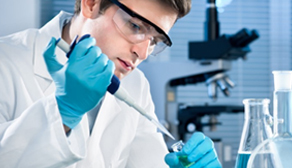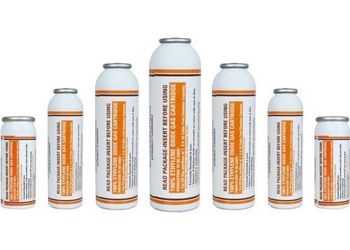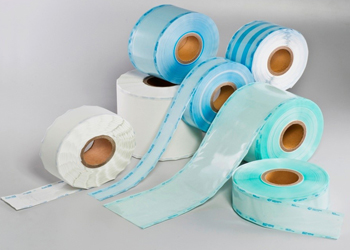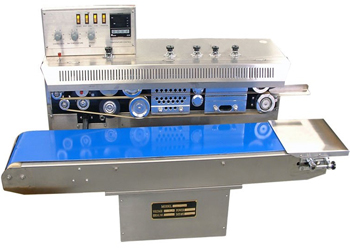Sterilization is an indispensable part of maintaining safety and precision in various scientific disciplines, particularly in life science research and microbiology research and development (R&D). Researchers rely on sterilizers to ensure that their experiments, medical devices and biological samples are free from contaminants, pathogens and any other forms of microbial life that may skew results or compromise research integrity.
In the world of life science and microbiology research, the necessity of sterilizing materials and samples cannot be overstated. Ethylene oxide sterilization, in particular, has become one of the preferred methods for sterilizing sensitive materials and equipment, offering a non-thermal, efficient alternative to other sterilization techniques. This guide outlines how sterilizers, specifically ethylene oxide sterilizers, are used in these critical fields to ensure clean, contamination-free environments and effective research outcomes.
Ethylene Oxide Sterilization: The Core of Sterilization in Life Science Research
Ethylene oxide gas sterilization is a widely used method for sterilizing medical devices, laboratory instruments and biological samples. Its non-thermal process makes it especially suitable for sterilizing heat-sensitive materials that cannot undergo high-temperature sterilization.
How EO Sterilization Works?
Ethylene oxide gas works by penetrating the materials being sterilized, disrupting the molecular structure of microorganisms and rendering them non-viable. The process is highly effective against a broad range of bacteria, viruses, fungi and spores. In life science and microbiology research, this sterilization method is applied to ensure that biological samples, research tools and medical devices remain uncontaminated.
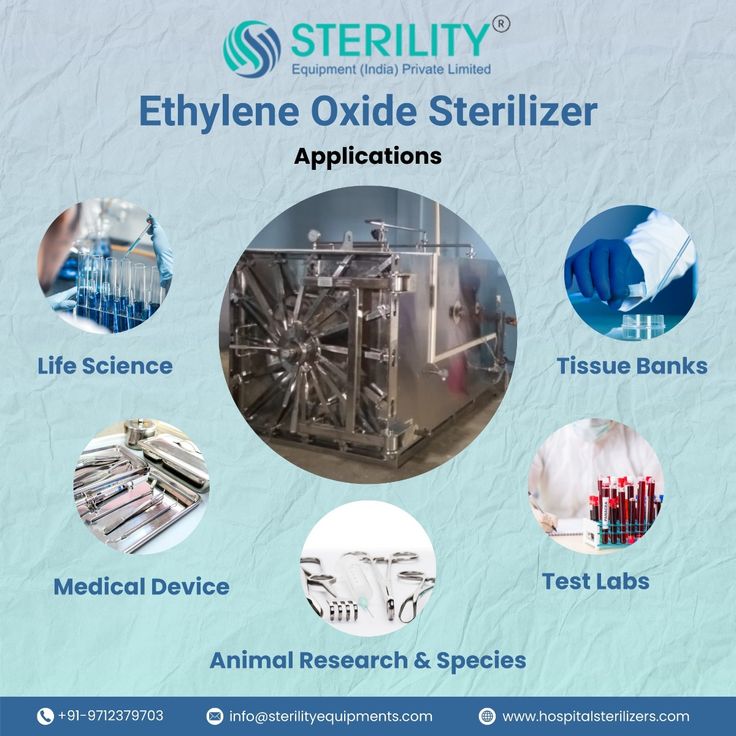
Why EO Sterilization is Used in Life Science Research
- Versatility for Sensitive Materials: EO sterilization is particularly useful for sterilizing materials that cannot withstand heat, such as plastics, rubber and electronic components.
- Penetration Power: EO gas can reach difficult-to-sterilize areas, including hollow instruments and internal surfaces of medical devices.
- Safety: When used correctly, EO sterilization is safe and effective for various research applications, ensuring minimal risk of contamination.
Why EO Sterilization is Used in Life Science Research
- Versatility for Sensitive Materials: EO sterilization is particularly useful for sterilizing materials that cannot withstand heat, such as plastics, rubber and electronic components.
- Penetration Power: EO gas can reach difficult-to-sterilize areas, including hollow instruments and internal surfaces of medical devices.
- Safety: When used correctly, EO sterilization is safe and effective for various research applications, ensuring minimal risk of contamination.
Sterilization of Surgical Instruments in Life Science Research
In the context of life science research, sterilization of surgical instruments is essential to maintain sterile conditions in laboratories and medical settings. Instruments used in research must be free from any microbial contamination to prevent skewed results and ensure the health and safety of those handling them.
Testimonial
“I did buy a 50 litre ETO sterilizer from Mr Alex, three years ago for Sun Orthopaedic Hospital, Bangalore. I am extremely happy with the service and performance of the machine. Also the running cost of the machine is extremely low.“
Medical Device Sterilization and the Role of EO Gas Sterilization
Sterilizing surgical instruments with EO gas sterilization ensures that they are thoroughly cleansed without altering their physical properties. This is crucial for maintaining the integrity of delicate research equipment, especially those used in surgeries, dissections or experimental medical procedures.
- Ensuring High Sterility Assurance Levels: In research settings, it is imperative to meet a high level of sterility assurance. The ability of EO gas to penetrate and sterilize all parts of the instruments, including difficult-to-reach areas, makes it ideal for life science and microbiology labs.
- Non-Destructive Sterilization: EO sterilization is also beneficial as it does not degrade the materials of the surgical instruments, unlike some other sterilization methods, preserving the precision of the tools.
EO Sterilization in Medical Device Development and Research
In addition to sterilizing surgical instruments, EO sterilization plays a pivotal role in the development and testing of medical devices. These devices must be sterilized before being used in clinical trials or patient treatments. As a result, research and development labs across the globe turn to fully automatic ETO sterilizers for reliable, high-quality sterilization.
Medical Device Sterilization and Regulatory Compliance
For any medical device being developed or tested in the R&D phase, sterilization is a non-negotiable requirement. Using EO sterilization ensures that the devices are free from harmful microorganisms, aligning with the strict regulatory standards set by health authorities.
- Ensuring Product Safety: In R&D settings, it’s critical that sterilization is performed accurately to prevent contamination in clinical trials and further ensure that the devices are effective and safe for human use.
- Customization for Specific Devices: Fully automatic ETO sterilizers are equipped to handle different types of medical devices, providing customizable cycles based on the specific materials and requirements of the product.
Sterilization Benefits for Biological Samples in Microbiology Research
Microbiology research relies heavily on the analysis of biological samples, including bacteria, viruses, fungi and human tissues. The ability to sterilize samples is essential in preventing contamination during experiments and ensuring the accuracy of results. Sterilization also plays a vital role in maintaining a sterile environment within laboratories, preventing cross-contamination between different sample sets.
Maintaining Sample Integrity with EO Gas Sterilization
In microbiology research, EO sterilization is frequently used to sterilize biological samples before analysis. This ensures that the samples are free from harmful microorganisms that could affect the study results. EO sterilisation is non-invasive and does not alter the physical or chemical structure of the biological samples, which is essential in maintaining the integrity of the sample.
- Ideal for Sensitive Samples: Sensitive biological samples, such as those involving cell cultures or genetically modified organisms (GMOs), require a sterilization method that won’t interfere with the sample’s structure. EO sterilization fulfills this need by eliminating contaminants without causing damage.
- Improved Laboratory Environment: Regular sterilization of laboratory surfaces, tools and equipment ensures a clean, contamination-free environment, which is crucial for conducting reliable and reproducible experiments.
Fully Automatic ETO Sterilizers in Research & Development
In modern research and development facilities, automation is key to enhancing efficiency and consistency. E T O sterilizers are becoming increasingly common in life science and microbiology research due to their ease of use, high throughput and reliability.
Advantages of Fully Automatic ETO Sterilizers
- Precision and Accuracy: Fully automated sterilizers ensure consistent sterilization cycles, reducing the likelihood of human error and increasing reliability in sterilization processes.
- Time-Saving: Automated systems reduce the need for manual monitoring, allowing researchers to focus on other tasks while ensuring the sterilization process runs smoothly.
- Scalability: These sterilizers can handle larger volumes of medical instruments, laboratory equipment and samples, making them suitable for both small and large-scale research operations.
Hospital Sterilization and Its Connection to Life Science Research
Hospitals and healthcare facilities also rely on sterilizers to maintain patient safety and infection control. The sterilization methods used in hospitals are often aligned with those used in life science and microbiology research, ensuring consistency in sterilization standards across different sectors.
Client Speaks
“I have purchased the eto machine. Very good service.”
Sterilization Benefits in Hospital Settings
Hospitals rely heavily on sterilization methods like EO gas sterilization to maintain the sterility of surgical instruments, medical devices and various other healthcare tools. These sterilization processes are critical in preventing healthcare-associated infections (HAIs) and ensuring patient safety during medical procedures.
- Precision and Accuracy: Fully automated sterilizers ensure consistent sterilization cycles, reducing the likelihood of human error and increasing reliability in sterilization processes.
- Time-Saving: Automated systems reduce the need for manual monitoring, allowing researchers to focus on other tasks while ensuring the sterilization process runs smoothly.
- Scalability: These sterilizers can handle larger volumes of medical instruments, laboratory equipment and samples, making them suitable for both small and large-scale research operations.
Conclusion:
Sterilizers, particularly those using ethylene oxide sterilization, play an irreplaceable role in ensuring the success of life science and microbiology research and development. From the sterilization of surgical instruments and medical devices to the protection of biological samples, sterilizers help maintain safe and accurate research environments.
By utilizing advanced methods such as EO sterilization, R&D facilities can ensure that their materials and samples are free from contaminants, enabling them to achieve reliable results. The use of fully automatic ETO sterilizers further enhances efficiency, making sterilization processes quicker, more reliable and easier to manage.
The importance of sterilization in life science and microbiology cannot be overstated, as it guarantees both the safety of research environments and the integrity of experimental outcomes. With the continued evolution of sterilization technology, researchers can look forward to even more precise and effective sterilization methods in the future, allowing them to continue advancing knowledge in critical fields.


